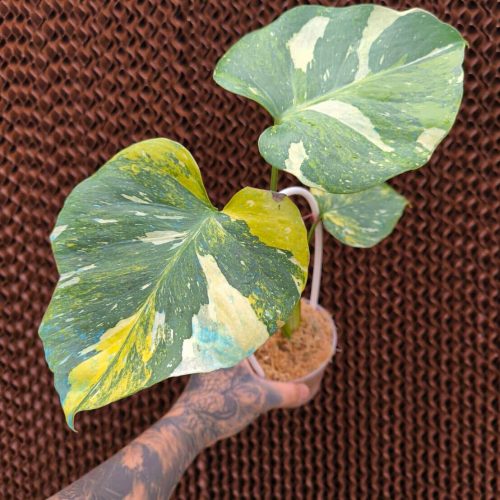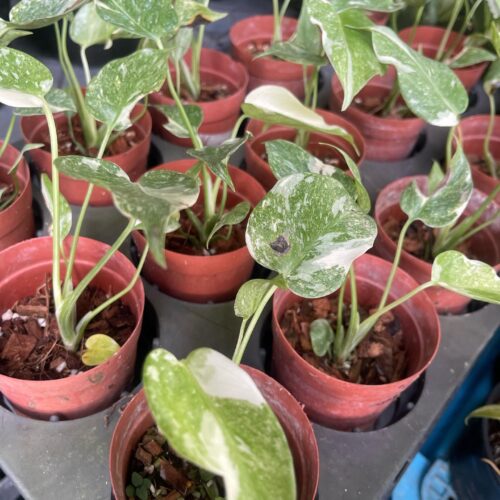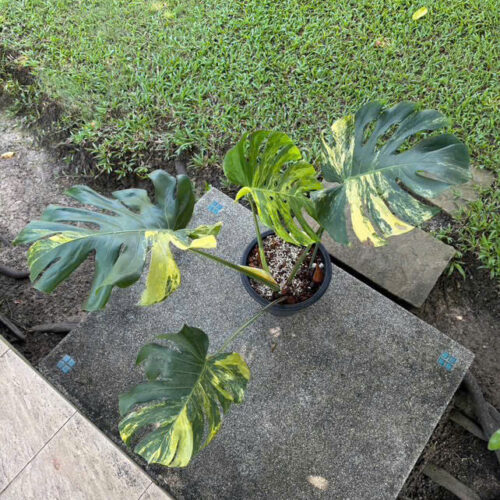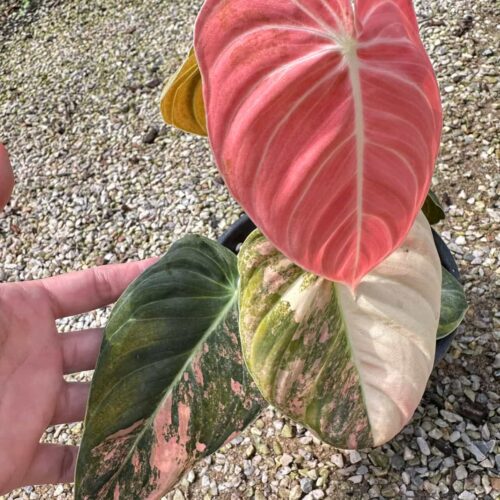Variegation in plants refers to the appearance of differently colored areas on the leaves, stems, or flowers. This is caused by a lack of chlorophyll, which gives plants their typical green color. Some plants naturally have variegated leaves, but it is also possible to induce variegation in plants through different techniques.
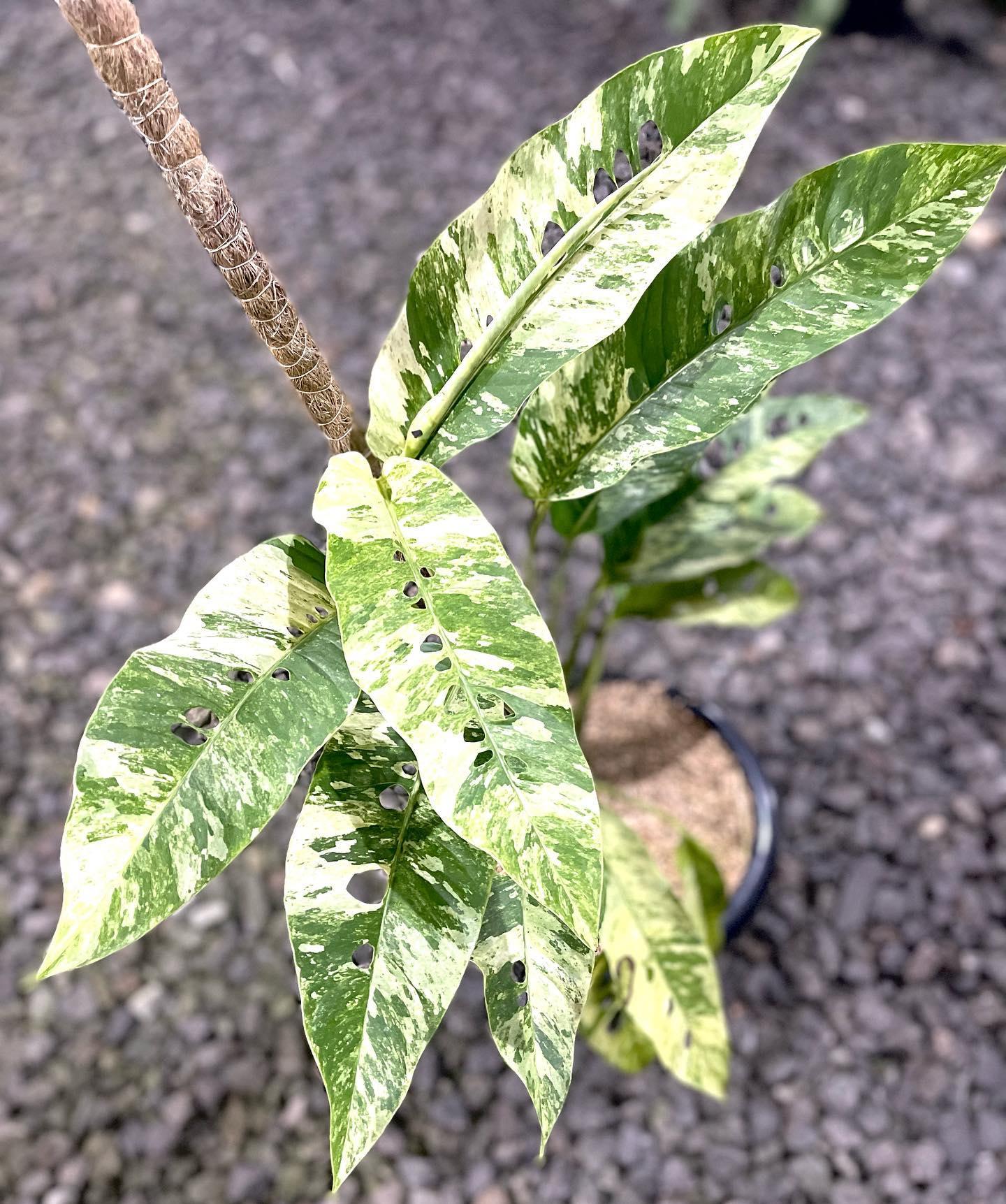
Using Viral Infections to Create Variegation
Using Tobacco Mosaic Virus
One method for artificially creating variegation is through viral infections. The tobacco mosaic virus (TMV) is commonly used for this purpose.
TMV can be transmitted to plants by rubbing infected tobacco leaf extract on the leaves of another plant. When a plant is infected with TMV, it interferes with the plant’s ability to properly produce chlorophyll. This results in a mosaic pattern of discolored spots or streaks on the plant’s leaves and sometimes stems.
Infecting a plant with TMV carries risks. It can stunt the plant’s growth, distort its leaves and flowers, or even kill it in some cases. However, if the plant can tolerate the infection, the variegated patterns can be quite striking. Some plants, like tulips, can have beautiful streaked flowers when infected with TMV.
Trying Other Viruses
Along with TMV, other viruses like cucumber mosaic virus, potato virus X, alfalfa mosaic virus, and tobacco rattle virus have also been used to generate variegation. The results vary depending on the virus and the plant. It takes some experimentation to find plant-virus combinations that produce appealing variegation without severely harming the plant.
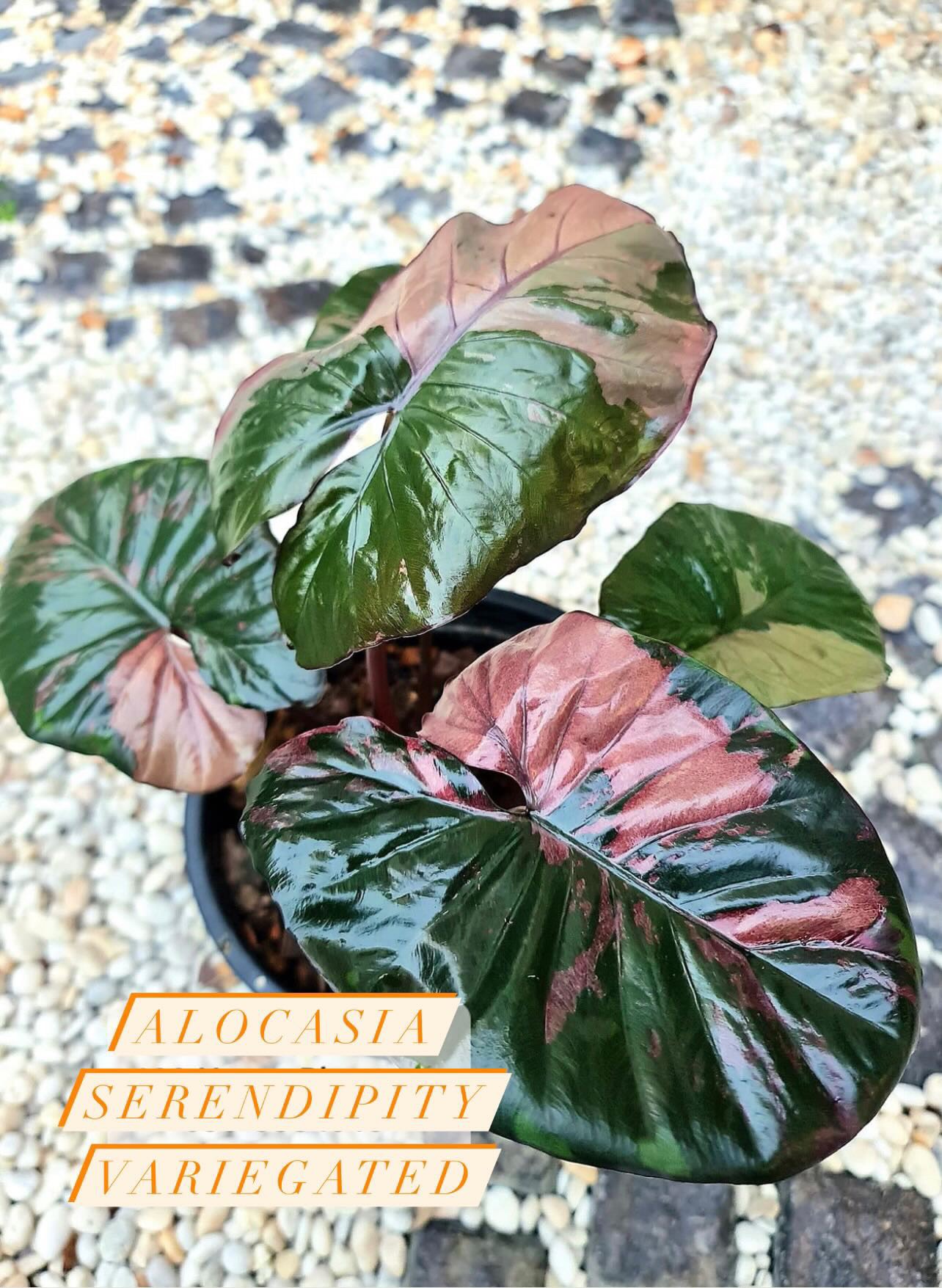
Using Chemicals to Induce Variegation
Applying Herbicides and Bleaches
Some chemicals like herbicides and bleaches can be carefully applied to plants to interfere with chlorophyll production in certain areas, creating a bleached or variegated appearance.
Products like gramoxone, white gasoline, and lysol have been used for this purpose at very diluted concentrations. They are often applied using a cloth or cotton swab directly onto the leaf or stem of the plant. This kills the chlorophyll producing cells of the plant tissue they touch, resulting in white variegated spots.
Over time, as the leaf or stem grows, the bleached areas can elongate into streaks. This works best on plants with actively growing meristems, like dracaena, croton, or coleus. However, the chemicals can easily damage and kill the plants if over-applied, so caution is needed.
Trying Mineral Deficiency
Inducing nutrient deficiencies like magnesium or calcium deficiency can also sometimes produce chlorosis (yellowing due to lack of chlorophyll) along leaf veins or margins.
For example, some African violet growers intentionally limit calcium to generate leaves with white variegated edges. However nutrient deficiencies come with risks, as they can weaken or kill the plant if taken too far.
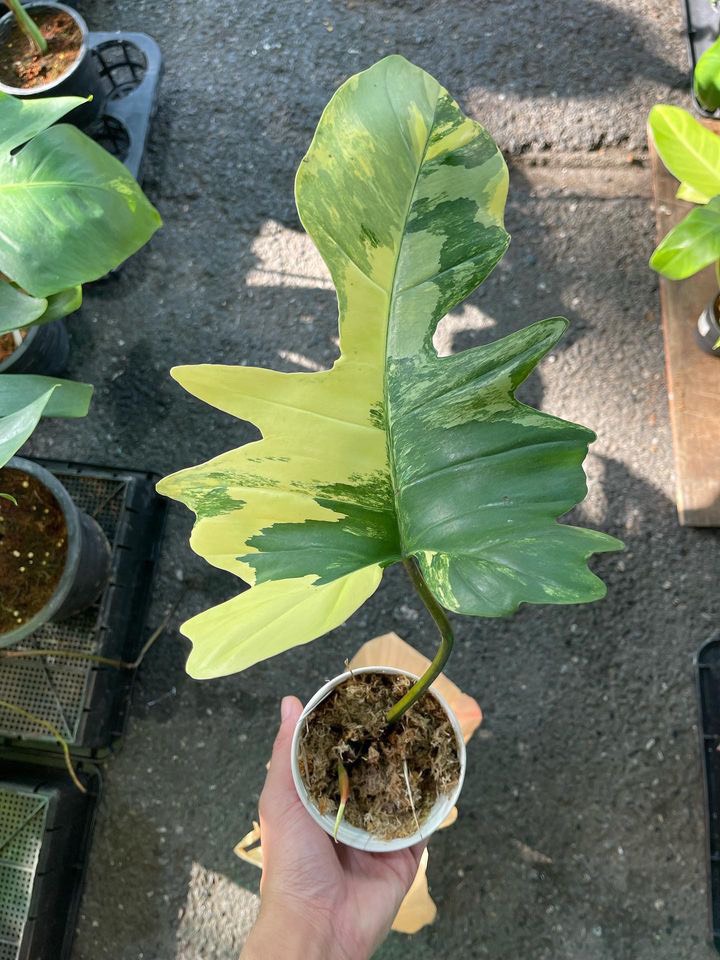
List of the most sought after Rare Variegated Plants in 2023
Using Temperature Shock
Exposing Plants to Extreme Cold
Exposure to cold temperatures can damage plants’ ability to produce chlorophyll. This property can potentially be exploited to generate variegation by precise applications of extreme cold on certain parts of a plant.
Methods like dipping just the tips in liquid nitrogen or pressing dry ice against stems have sometimes produced stunning variegated patterns on plants like coleus and angel wing begonia. However, subjecting plants to extreme temperatures can easily kill delicate tissue, so trials require lots of control and precision.
Trying Lasers
There has been some scientific research using lasers to target and bleach specific cells in plant leaves, creating microscopic variegation by disabling the cells that produce chlorophyll.
This kind of laser-induced variegation has so far only been done on very small scales and with very specialized equipment. However, as laser technologies continue advancing, they may one day provide a highly controlled means for generating variegated plant patterns without harming the plants themselves. The challenge lies in finding ways to scale up the precision bleaching to larger leaf and stem areas.
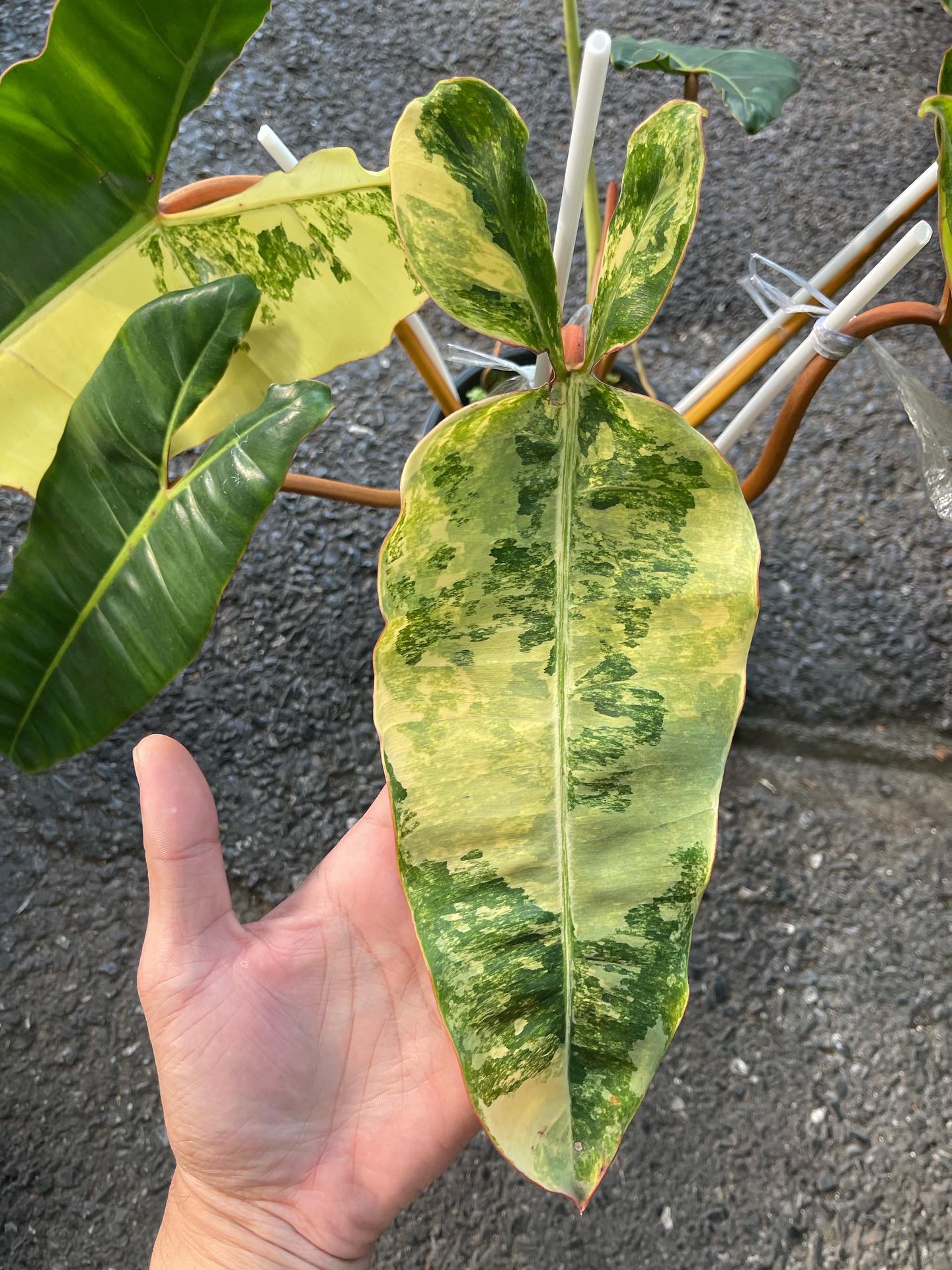
Propagating Variegated Plants
Propagating from Stem Cuttings
Many variegated plants have their desirable traits encoded genetically. This means they can be reliably propagated from cuttings.
Taking stem cuttings and rooting them allows identical clones of prized variegated plants to be duplicated. Examples like variegated snake plants, variegated rubber trees, or variegated ivies are commonly propagated this way to increase supply.
Trying Tissue Culture
Variegated plants, even those with very fragile tissue, can sometimes be cloned and mass produced using sterile tissue culture techniques.
This involves taking a small tissue sample and growing it out on specialized nutrient culture media, ultimately generating many clonal plantlets. The patterns and intensity of variegation are often preserved with reliability using tissue culture propagation.
Caring for Variegated Plants
Ensuring Adequate Light Levels
While visually striking, variegation comes at a cost due to the reduced levels of chlorophyll. This can make the plants more light hungry.
Variegated plants often need very bright light conditions and should be watched for signs of light starvation. Symptoms like stretches between leaf nodes or faded/paler variegation can indicate a need for higher light.
Monitoring for Reversion
Occasionally, variegated plants will “revert” – producing all green or more green foliage. This happens because cells that retain the ability to produce chlorophyll gain a competitive advantage under sub-optimal growing conditions.
To minimize reversion, ensure variegated plants get the bright light, nutrients, and ideal care they need to thrive. Reverted stems should be promptly pruned to prevent them from dominating.
Where to buy Rare Variegated Plants? Benefits from importing plants from Thailand
- Shipping: Door to door shipping, fast and safe with Dragon Courier
- Biodiversity: Thailand is known for its rich biodiversity, including a wide variety of aroid species. This diversity allows importers to access a broad range of unique and exotic aroid plants.
- Quality and Health of Plants: The suitable climate helps the plants grown here stay healthy and of high quality.
- Cost-Effectiveness: Due to favorable growing conditions and efficient production methods, Thai aroid plants can often be more cost-effective compared to those from other countries.
- Access to Hybrid Varieties: Thai growers are often involved in the development of new hybrid aroid varieties, offering unique plants that may not be available from other sources.
Rare Variegated Plants species are the most sought after by aroid plant lovers
Conclusion
There are various methods that can be used to artificially generate variegation in plants, like viral infections, chemicals, temperature extremes, and lasers. However, many of these carry significant risks of damaging or killing the plants. The most reliable approach is to start with stable genetically variegated plants that can be carefully propagated, either through cuttings or tissue culture. Caring for these prized variegated plants includes ensuring very bright light and prompt pruning of any reverted foliage to maintain their ornate and unique beauty.
FAQ
- What does it mean for a plant to be variegated?
- Variegation in plants refers to the presence of different colored areas on the leaves or other plant parts. It can include stripes, patches, or spots of colors other than green. Variegated plants are prized for their unique appearance.
- Can I make an existing green plant variegated?
- While it’s challenging to change an already green plant into a variegated one, some techniques involve propagation, such as taking cuttings from a variegated section of the plant and growing them separately. However, success may vary depending on the plant species.
- What are the common methods to encourage variegation in plants?
- Common methods to encourage variegation include selecting variegated plant varieties, providing adequate light (but avoiding too much direct sunlight), maintaining the right temperature and humidity, and occasionally pruning to promote variegated growth.
- Can I artificially create variegation in a plant?
- Artificially inducing variegation is possible through techniques like “chimeral tissue culture” or using variegated plant hormones. However, these methods can be complex and are typically performed by experienced horticulturists or botanists.
- What should I do to care for variegated plants?
- Caring for variegated plants involves providing them with the right conditions, including proper lighting, watering, and fertilizing. Regularly inspect the plant for any signs of reversion (the return to an all-green state) and prune as necessary to maintain the variegation.
See more Unlock Variegation Secrets – What Makes Plants Unique?

